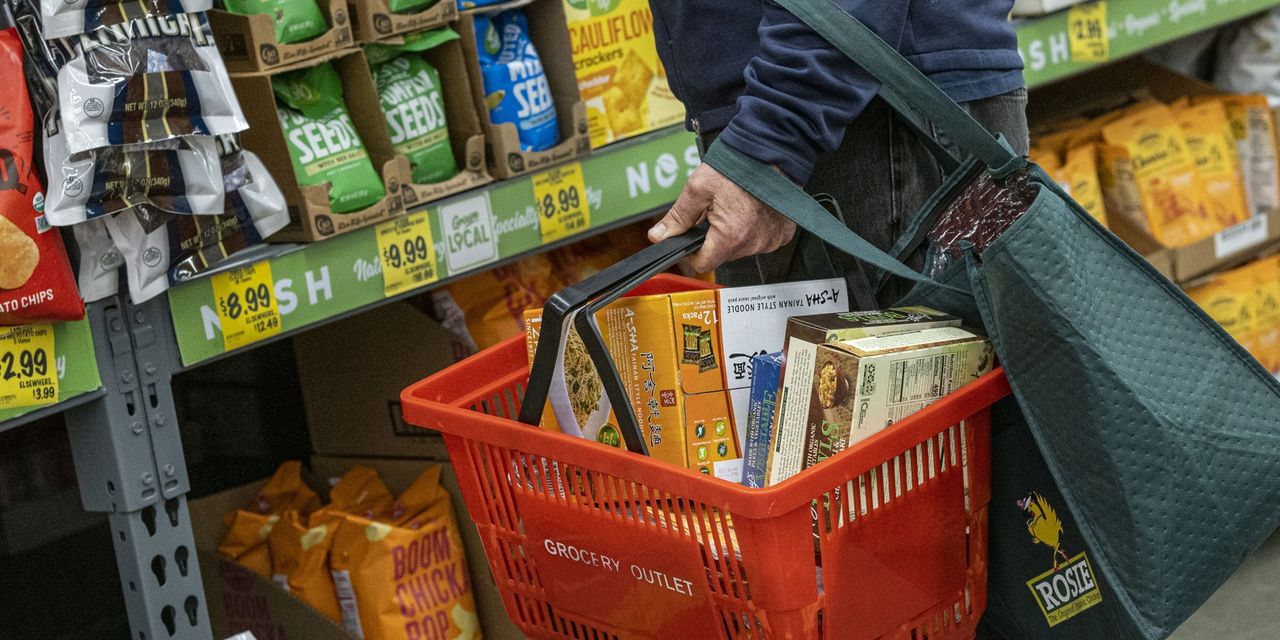There was a lot for the Federal Reserve to like in the latest economic data, from slowing price growth to smaller-than-expected wage gains. What matters most, however, is whether the latest trends can continue throughout the rest of the year.
Two separate data releases on Friday came in softer than expected, delivering positive news to the central bank and reflecting an economy that is slowing mildly as monetary policy tightens. The Fed’s preferred inflation indicator rose 0.2% in June to reach a 4.1% annual pace, marking a significant step down from the 4.6% annual rate notched in May.
And compensation costs grew 1% in the second quarter to reach a 4.5% annual pace. That was down from the first quarter’s 4.8% annual rate.
Both measures remain well above where the Fed would like them to be. June’s 4.1% annual inflation rate is more than double the bank’s target of 2%, while wages continue to rise far faster than the roughly 3.5% rate most economists consider consistent with that goal.
But the trend they reflect is clear, underscoring how inflation broadly has been slowing in recent months. The core personal-consumption expenditures price index is now down more than a full percentage point from its peak of 5.4% in February 2022 and is back to its slowest pace since September 2021. The Employment Cost Index, meanwhile, grew at its slowest pace in two years.
“The numbers are headed in the right direction,” wrote Ian Shepherdson, chief economist with Pantheon Macroeconomics.
The cooling so far has allowed the Fed to slow its pace of monetary-policy tightening as it waits to see how its 5.25 percentage points of interest-rate increases since March 2022 are affecting the economy. Fed Chairman Jerome Powell this week left the door open for the bank to raise interest rates again in September. Whether it does will largely depend on where inflation—particularly as measured by the PCE—goes from here.
Some economists were upbeat, saying that Friday’s data suggest the slowdowns will continue. Prices rose more slowly in June mainly because goods are costing less, with a decline of 0.1% for the month that left them down 0.6% from a year ago.
The cost of services was still rising far faster, climbing 0.3% for the month and 4.9% over the year. But the slowdown in wage growth could suggest that further relief will be coming because compensation is the largest expense for service providers.
“The downshift we expect to see in both ECI wage growth and core PCE services inflation in the second half of the year are two sides of the same coin,” Shepherdson wrote.
At the same time, however, other economists caution that the economy isn’t yet out of the woods. They say the Fed may well have more work to do before inflation is convincingly headed back toward its 2% target.
Some of the concerns are straightforward: Gas prices are rising again, which will push headline inflation up in coming months. Supply chains remain fragile, meaning even mild disruptions could drive goods prices up.
Year-over-year price comparisons, meanwhile, will soon become less favorable given that inflation began slowing last July, a factor economists refer to as “base effects.” It could mean price growth appears to move sideways or speed up slightly through the rest of the year, rather than continuing to decline.
The Fed also prefers to track PCE inflation, rather than the more widely watched consumer price index. A difference in how the two are calculated could keep PCE elevated even if CPI keeps falling.
CPI gives far more weight to the cost of housing, which is poised to continue cooling throughout this year. PCE puts more emphasis on core nonhousing services, which are less affected by higher interest rates and have so far slowed only mildly. The PCE also gives especially significant weight to medical services costs, which economists think could jump later this year.
Perhaps most significantly, consumers’ spending remains nearly as strong as ever. The PCE release showed personal spending rose 0.5% in June, or 0.4% after adjusting for inflation—marking the largest monthly surge since the start of the year. The longer consumers keep spending at high levels, the less incentive there is for firms to lower prices and the harder it is to tamp down inflation.
“It may be ‘good news’ that consumers are so resilient,” Wells Fargo economist Tim Quinlan told Barron’s. “But that implies the Fed has even more work to do with rates.”
Stocks were higher after the data was released. The
S&P 500
gained 0.6%, while the
Dow Jones Industrial Average
rallied 0.5%. The
Nasdaq Composite
rose 1.1%.
Write to Megan Cassella at [email protected]
Read the full article here













